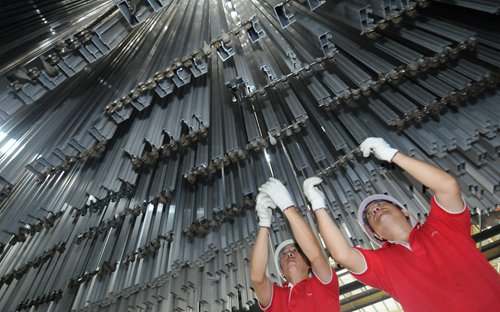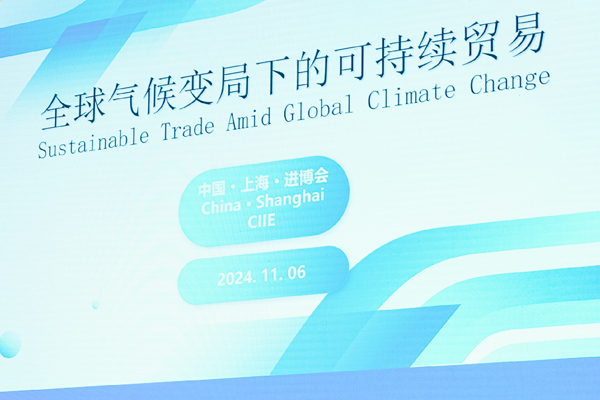【Global Times】Good start for China-US 100-day trade plan
July 12 , 2017
Workers at an aluminum factory in Baise, South China’s Guangxi Zhuang Autonomous Region Photo: CFP
The China-US 100-day action plan that was initiated after the two presidents’ meeting at Mar-a-Largo in April has achieved new progress, and the two sides are discussing a one-year cooperation plan, President Xi Jinping said on Saturday on the sidelines of the G20 summit held in Hamburg, Germany, when he met US President Donald Trump, the Xinhua News Agency reported.
Experts said on Sunday that the 100-day action plan has so far made a sound start and the two countries are expected to further open up sectors like finance, services and high tech in the future to boost bilateral economic and trade ties.
A total of 10 initial results were released under the plan on May 12 in sectors such as agricultural products, energy, banking and financial services.
For instance, as part of the plan, the US has pledged to issue regulations on the export of China-made chicken and poultry by July 16, and in turn China has agreed to lift a 14-year ban on beef imports from the US by the same deadline.
On June 27, the US accepted imports of cooked poultry from China.
The General Administration of Quality Supervision, Inspection and Quarantine announced on June 20 that beef imports from the US were permitted in China. On June 27, US retail giant Wal-Mart’s membership store Sam’s Club in Shijingshan district Beijing, started selling beef imported from the US.
The initial results in improving trade ties have formed a basis for sound cooperation between China and the US, and the two countries are actively putting the initial plans into action, Gao Feng, spokesman of China’s Ministry of Commerce(MOFCOM), told a press conference on Thursday.
“With the aim to further advance bilateral economic cooperation, China and the US are conducting intensive consultations about follow-up results under the plan, and new achievements are expected,” Gao said.
“The 100-day action plan has so far made a good start. The 10 initial results are based on mutually opening-up markets, aiming to address trade imbalances between China and the US,” Xu Hongcai, deputy chief economist at the China Center for International Economic Exchange, told the Global Times on Sunday.
China’s trade surplus with the US was 640.5 billion yuan ($94 billion) in the first five months, up 12.2 percent year-on-year, according to data released by China’s customs bureau on June 8.
“The 100-day plan not only targeted some results, but more importantly, focused on Chinese and US attitudes and accomplishments for tackling bilateral trade issues,” said He Weiwen, Vice President and senior fellow at Center for China and Globalization (CCG), an executive council member at the China Society for the WTO.
“The key lies in whether cooperation in [bilateral trade] will continue,” He told the Global Times on Sunday.
Experts also showed concern that the plan may face obstacles as the US continues to launch trade remedy investigations into Chinese exports.
In the first half of this year, the US launched 11 trade remedy probes into China-made products, accounting for about 30 percent of the total investigations that China faced from the world, data released by the MOFCOM showed.
In April, the US Commerce Department launched an investigation into aluminum imports from China under the rarely used section 232 of the Trade Expansion Act of 1962 that allows restrictions on imports for reasons of national security, media reports said.
Trade friction between China and the US is unavoidable, so while it would not be a major obstacle to the success of the 100-day action plan, it will hinder trade ties moving forward, according to experts.
He said that it is normal to see the US launch trade remedy probes against China. But what matters is whether the final ruling complies with WTO rules or is based on US abuse of the trade remedy measures, He noted.
“Trade friction would harm the smooth advance of the China-US 100-day action plan,” he said.
In a bid to promote bilateral trade and the economic relationship, the two countries are expected to open up more industries such as finance, services and high tech in the coming years, Xu said.
“More high-tech products imported from the US could advance the reforms of Chinese companies and help them improve competitiveness,” the expert added.






